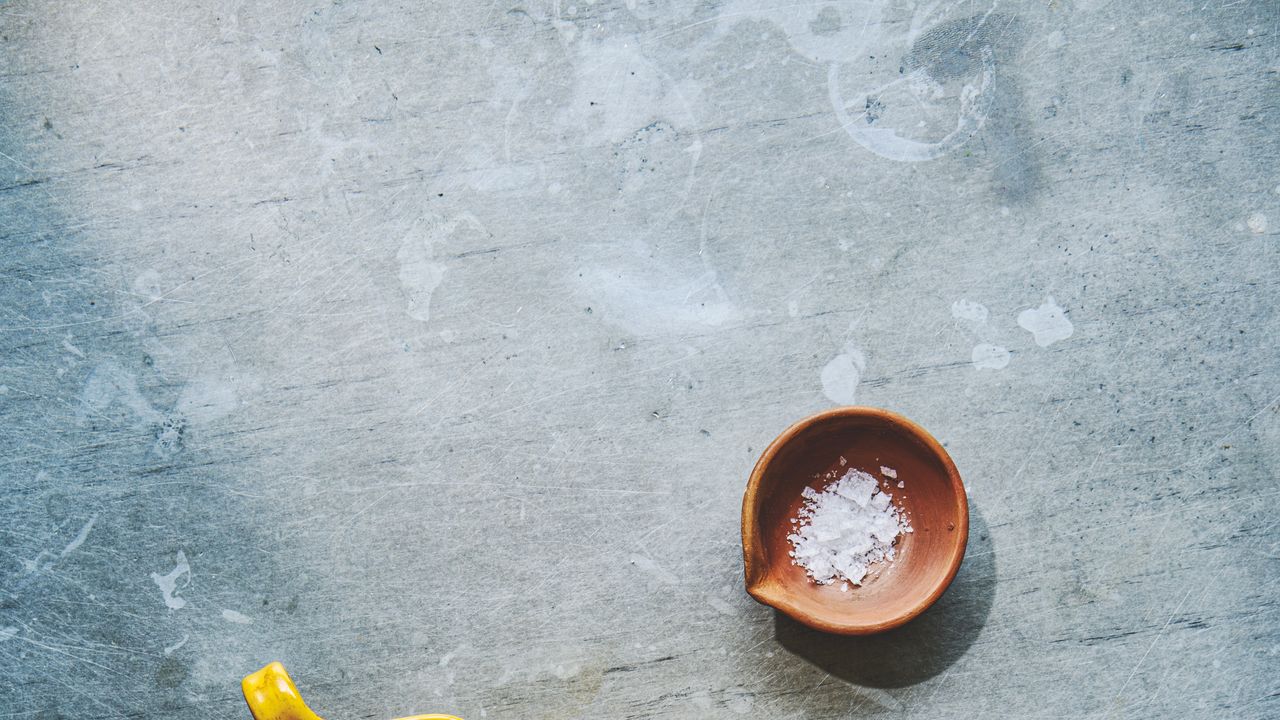
How to Get Rid of Spider Mites on Houseplants—and Signs Your Plant Is Infested
Spider mites may be small, but they can cause big problems for indoor houseplants. These resilient pests can reproduce quickly and find clever ways to hitchhike into your home. It’s essential to know the signs your plants are distressed by these little bugs and the best ways to eradicate them.
So, we went straight to the experts to learn why houseplants get these pests, common signs to watch out for, and how to get rid of spider mites on indoor plants.
Why Do Plants Get Spider Mites?
These microscopic pests can affect plants for several reasons. Nathan Heinrich, horticulturist and botanical designer, says that just because your plants develop a spider infestation does not mean you’re a bad gardener. Even the best horticulturists have to battle these irritating pests.
“As they are very difficult to spot until an infestation becomes serious, by the time you realize your plants have been compromised, there have most likely been several generations of spider mites making themselves at home,” he explains.
“Nearly invisible to the naked eye, spider mites can find their way onto your plants in a variety of ways,” he continues. “Birds, wind, gardening tools, garden soil, as well as piggybacking on other insects, are just a few of the many ways that spider mites move from plant to plant. All it takes is a few eggs or a pregnant female spider mite to come in contact with a new plant for an infestation to begin.”
Common Signs Your Indoor Plants Have Spider Mites
Lotte Berendsen, certified gardening expert for PlantIn, says that spider mites have a life cycle of about a week, which means that it takes them less than 7 days to go from egg to egg-laying adult. Because of this, an infestation can seem to “suddenly” explode, while in reality, the bugs have been around long before you noticed them.
The bad thing about these pests is that they are less than 1 millimeter in size, making it nearly impossible to spot them with the naked eye. In fact, they will look like tiny spots on your plant’s leaves.
That’s why it’s vital to keep an eye out for signs of these little bugs; that way, you can take action to get rid of spider mites on your indoor plants before it’s too late.
Here are the most common signs your plant is infested with spider mites:
- Tiny moving dots on leaves: Since spider mites are so small, they appear as tiny moving dots or spots on the plant’s leaves. So, if you see spots moving around on your plants, it can be a sign that they have spider mites.
- Webbing: Spider mites produce fine, silky webbing, which you will usually find under the leaves and between the stems and leaves.
- Leaves have a dusty appearance: If your plant’s leaves look dusty, it can be caused by spider mites. A few reasons for this appearance are from them sucking the nutrients from the plant (which leaves tiny white or yellow spots), their waste, and the webbing itself can catch dust particles.
- Yellowing foliage: When a plant’s leaves start to yellow, it could mean a number of things, such as under or overwatering, but it can also be a sign of spider mites. If your plant has adequate hydration, then it’s time to search for these pests to see if they are causing the issue.
How to Get Rid of Spider Mites with DIY Methods
Berendsen says that though these bugs are hard to eliminate, treating spider mites does not have to be hard or expensive. Many homemade DIY options have been shown to be effective against these critters.
Here are two of the best DIY methods our experts recommend using to get rid of spider mites.
Neem Oil Spray
“Neem oil is a popular ingredient for plant lovers and gardeners,” Berendsen says. “It has the powerful potential to suppress insect’s instinct to feed and reproduce, which can help eliminate unwanted bugs.”
To use neem oil on your plant, she recommends combining 1 tablespoon of pure neem oil with 10 oz. of water and a few drops of dish soap. “Ta-da, you’ve just made a potent insect killer,” she says. Mist the entire plant (including the topsides and undersides of the leaves) with this solution to ensure you wipe out all of the mites.
DIY Alcohol Spray
Heinrich says that for houseplants with large glossy leaves, such as rubber plants and other tropicals, you can use a mixture of one part hand soap and ten parts rubbing alcohol diluted in a spray bottle to rid these pests.
“Spray onto the top and underside of the leaves and wipe off with a soft towel for an effective, non-toxic treatment,” he says. “This should be repeated for several weeks as eggs can continue to hatch for several weeks to come.”
Store-Bought Solutions to Get Rid of Spider Mites
If you don’t want to do the DIY route, you can buy products to get rid of spider mites on indoor plants. However, these treatments can be toxic to the environment, humans, and pets, so be sure to read up on any warnings for the product before using.
Always follow the manufacturer’s directions, wear protective gear if necessary, and keep these products away from your furry friends.
Systemic Treatments
Heinrich says that for roses, non-fruiting, and non-edible plants, the most effective treatment for spider mites is a systemic liquid or granular “miticide” application that is absorbed through the roots into the plant’s tissues.
“As the spider mites suck the juices from the leaves and stems of a plant, they ingest the systemic chemicals and die immediately,” he says. “Be sure to never use systemic treatments on edible plants or plants that produce fruit.”
“For long-term treatment, this is the most effective way to keep spider mites at bay because you don’t have to constantly spray or check for the appearance of mites,” he continues. “With just a few applications a year, the problem takes care of itself.”
Chemical Pesticides
Garden centers and plant stores offer a variety of pesticide options. “Ask the local plant expert in the store for their recommendations, as pesticide ingredient laws can change depending on your location,” says Berendsen. “Ingredients that are mostly approved and effective against these mites include permethrin or pyrethrin.”
Natural Predators
Another store-bought option is to purchase beneficial insects that can be released in your garden or home to get rid of unwanted pests.
“The most well-known enemy of spider mites is the Phytoseiulus persimilis mites,” Berendsen says. “These critters feed on spider mite larvae, killing the bugs before they can complete their life cycle. This can help reduce the population significantly. You can purchase beneficial insects online or in garden centers in your area.”
How to Prevent Spider Mites
When it comes to pests, prevention is better than treatment. Implementing the following expert tips can help prevent spider mites from invading your indoor plants.
Inspect Your Plants Frequently
Heinrich says checking your plants regularly is an important part of preventing spider mite infestations. “You might need to use a magnifying glass to spot the tiny insects and their transparent webbing, and at the first sign of mites, spray them and isolate your plants from all your other plants for the next few weeks,” he says.
Wash Your Leaves
“Spider mites prefer dusty, warm, and dry environments,” Berendsen says. “By washing your plant’s leaves, you will not only refresh your plant and give it an overall healthier appearance, but you can also reduce the chances of pests.”
“We recommend popping your plants in the shower about once a month,” she adds. “Thoroughly rinse and wash the leaves to remove dust and any potential bugs that are crawling around.”
Increase Humidity Levels
Both experts recommend raising the humidity levels in your house to help prevent spider mites from making themselves at home. “Spider mites love hot, dry, and sunny locations, so up humidity levels, water regularly, and put your plants in a shady location,” Heinrich advises.
He adds that a humidifier to the rooms where your houseplants live will discourage mites from getting established. “Misting houseplants regularly with distilled water is also an effective way to keep spider mites away,” he continues.
Berendsen says that humidifiers aren’t just helpful against pests; they are also beneficial to some plants’ health. “Most houseplants prefer high humidity, as many of them come from tropical climates,” she explains. “Adding humidifiers can also help your plants look and grow healthier and happier.”
Use Neem Oil Preventively
“Neem oil is not just a pest treatment, it’s also an effective repellent,” Berendsen says. “It can help reduce populations before they get out of control. You can use your neem oil solution about once every two to four weeks to keep spider mites and other pests at bay.”










